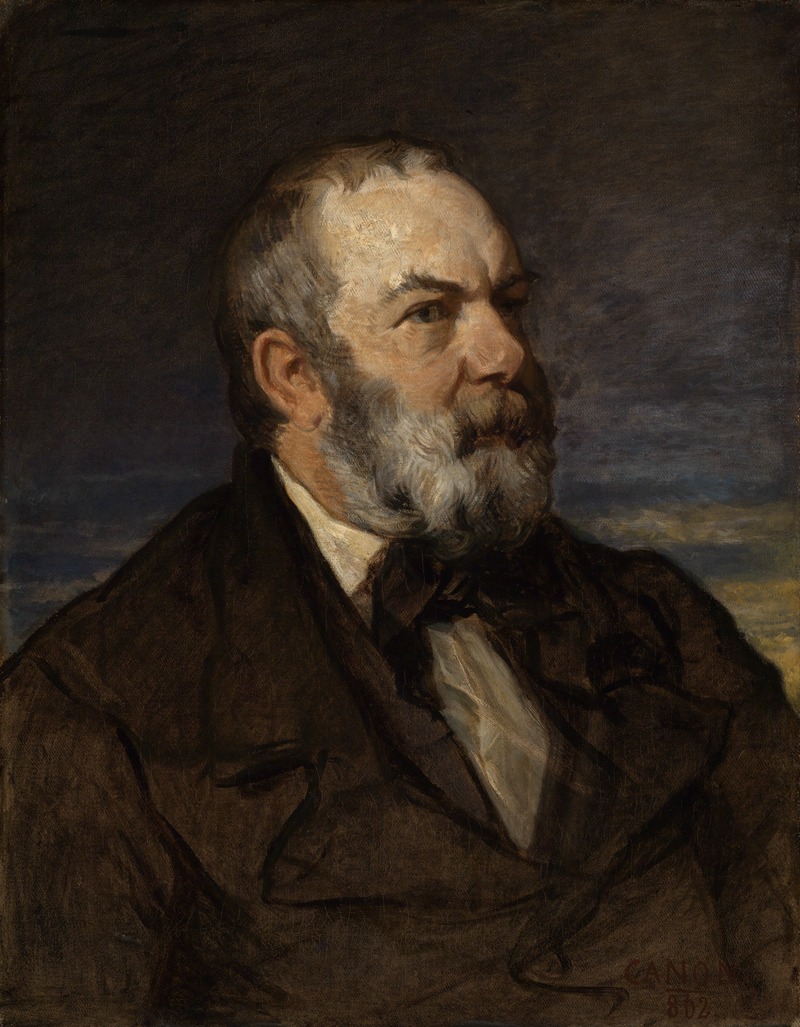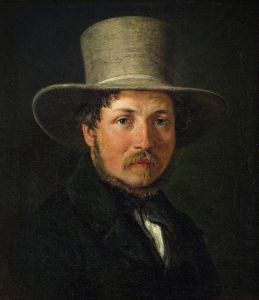
Portrait of the painter Johann Wilhelm Schirmer
A hand-painted replica of Hans Canon’s masterpiece Portrait of the painter Johann Wilhelm Schirmer, meticulously crafted by professional artists to capture the true essence of the original. Each piece is created with museum-quality canvas and rare mineral pigments, carefully painted by experienced artists with delicate brushstrokes and rich, layered colors to perfectly recreate the texture of the original artwork. Unlike machine-printed reproductions, this hand-painted version brings the painting to life, infused with the artist’s emotions and skill in every stroke. Whether for personal collection or home decoration, it instantly elevates the artistic atmosphere of any space.
The painting Portrait of the Painter Johann Wilhelm Schirmer was created by the Austrian artist Hans Canon (1829–1885). Hans Canon, whose real name was Johann Baptist Strašiřipka, was a prominent 19th-century painter known for his portraits, historical scenes, and allegorical works. This particular portrait depicts Johann Wilhelm Schirmer (1807–1863), a German landscape painter and one of the founders of the Düsseldorf School of Painting.
Johann Wilhelm Schirmer was a significant figure in 19th-century art, recognized for his contributions to landscape painting and his role as a teacher. He served as the first director of the Karlsruhe Academy of Fine Arts and was instrumental in shaping the development of landscape painting in Germany. Schirmer's works often featured detailed and atmospheric depictions of nature, reflecting his deep study of the natural world.
Hans Canon's portrait of Schirmer captures the essence of the sitter with a focus on realism and character. The painting reflects Canon's skill in portraiture, showcasing his ability to convey the personality and stature of his subjects. The work is believed to have been created during Canon's mature period, a time when he had established himself as a sought-after portraitist in Vienna and beyond.
The exact date of the painting is not documented, and little is known about the circumstances under which it was created. However, the portrait stands as a testament to the artistic exchange and mutual respect between two prominent figures of 19th-century European art. While Schirmer was primarily known for his landscapes, Canon's depiction of him highlights the importance of portraiture in commemorating and celebrating the lives of influential individuals.
The painting is an example of the academic style prevalent during the 19th century, characterized by its attention to detail, formal composition, and emphasis on the subject's dignity. It is not only a representation of Schirmer as an artist but also a reflection of the cultural and artistic values of the time.
As of now, the current location of the painting and its provenance are not widely documented. Further research may provide additional insights into its history and significance within the broader context of 19th-century European art.


















